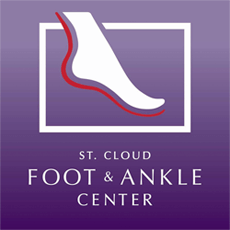 MLS laser therapy is a noninvasive therapy that combines two specific wavelengths of light (808nm and 905nm) to penetrate deep into tissues. This treatment provides anti-inflammatory effects and tissue repair stimulation, making it particularly effective for conditions that involve both pain and tissue damage.
MLS laser therapy is a noninvasive therapy that combines two specific wavelengths of light (808nm and 905nm) to penetrate deep into tissues. This treatment provides anti-inflammatory effects and tissue repair stimulation, making it particularly effective for conditions that involve both pain and tissue damage.
The treatment process does not involve cutting, injections, or medication. The non-invasive nature of MLS laser therapy makes it a particularly good option for patients who prefer to avoid surgery or reduce their reliance on pain medications. The treatment can be used alone or in combination with other therapies to enhance overall outcomes.
How MLS Laser Therapy Works
Dual-Wavelength System
The dual-wavelength system creates a synergistic effect that addresses multiple aspects of tissue healing by combining continuous and pulsed wavelengths.
-
Continuous: The 808nm wavelength penetrates deeply into tissues, reaching areas where inflammation and damage often occur. This continuous wave reduces pain and inflammation while improving cellular metabolism.
-
Pulsed: The 905nm wavelength operates in pulses rather than continuously. The pulsed delivery stimulates cellular repair processes and enhance the body's natural healing mechanisms.
Cellular Level Impact
At the cellular level, MLS laser therapy increases Adenosine triphosphate (ATP) production, which provides energy for cellular repair and regeneration. The light energy also improves circulation by dilating blood vessels, bringing more oxygen and nutrients to injured tissues. The resulting enhanced blood flow helps remove metabolic waste that can contribute to pain and inflammation.
Nerve Function
The treatment also affects nerve function, reducing pain signals and providing immediate relief for many patients. The laser energy helps normalize nerve activity, breaking the cycle of chronic pain that often accompanies foot and ankle conditions.
Collagen Production
Collagen production increases with MLS laser therapy, supporting the repair if connective tissues, including damaged tendons and ligaments . This is essential for long-term healing and helps prevent re-injury.
Anti-Inflammatory Effects
MLS laser therapy also reduces inflammation. The laser energy reduces the production of inflammatory mediators while promoting the release of natural anti-inflammatory substances, helping to control both acute and chronic inflammation.
Conditions Appropriate for MLS Laser Therapy
Plantar Fasciitis
Plantar fasciitis tends to respond well to MLS laser therapy. The treatment reduces inflammation in the plantar fascia while also promoting tissue healing. As a result, it often provides relief even when other treatments have failed.
Achilles Tendon Injuries
The deep penetration capabilities of MLS laser therapy are particularly beneficial to Achilles tendon injuries. This treatment effectively reaches the Achilles tendon, reducing pain and promoting healing of damaged fibers. Athletes often use this therapy to return to activity faster than with traditional treatments alone.
Neuromas
Neuromas, particularly Morton's neuroma, tend to respond well to the anti-inflammatory effects of MLS laser therapy. This treatment helps reduce swelling around compressed nerves, providing pain relief and improved function. It is an alternative to steroid injections or surgical intervention for many patients.
Diabetic foot ulcers
MLS laser therapy can help diabetic foot ulcers and wounds heal more effectively. This treatment promotes improved circulation and cellular metabolism, which can help accelerate wound healing. This is particularly important for diabetic patients with compromised healing abilities.
Arthritis
The anti-inflammatory effects of MLS laser therapy can relieve arthritis pain in the foot and ankle joints. While the treatment cannot reverse joint damage, it can significantly reduce pain and improve function. Many patients experience decreased stiffness and improved mobility after treatment sessions.
Questions to Discuss With St. Cloud Foot & Ankle
Wondering if MLS laser therapy is right for you? Schedule an appointment with one of our experienced Minnesota podiatrists today. During your consultation, be sure to describe your symptoms in detail and explain how they affect your daily activities. Share detailed information about when the pain started, what makes it better or worse, and any previous treatments you've tried. This can help your podiatrist determine if MLS laser therapy is appropriate for your condition.
If your Minnesota podiatrist recommends MLS therapy, additional topics to discuss with your foot doctor include:
Timeframe for Improvement
Ask about the expected timeline for improvement and how many treatment sessions your foot doctor thinks you might need. While every case is different, your Minnesota podiatrist can provide estimates based on your specific condition and its severity. Understanding the commitment involved helps you plan accordingly and set realistic expectations.
Overall Treatment Plan
Discuss how MLS laser therapy fits into your overall treatment plan. Your podiatrist may recommend combining laser therapy with other treatments such as physical therapy, orthotics, or activity modifications. Understanding how these different approaches work together helps ensure the best possible outcome.
Cost and Insurance Coverage
Inquire about the cost of treatment and insurance coverage options. While MLS laser therapy may represent an upfront investment, it can potentially save money by avoiding surgery or reducing the need for ongoing medications. Your podiatrist's office can help you understand the financial aspects of treatment.
